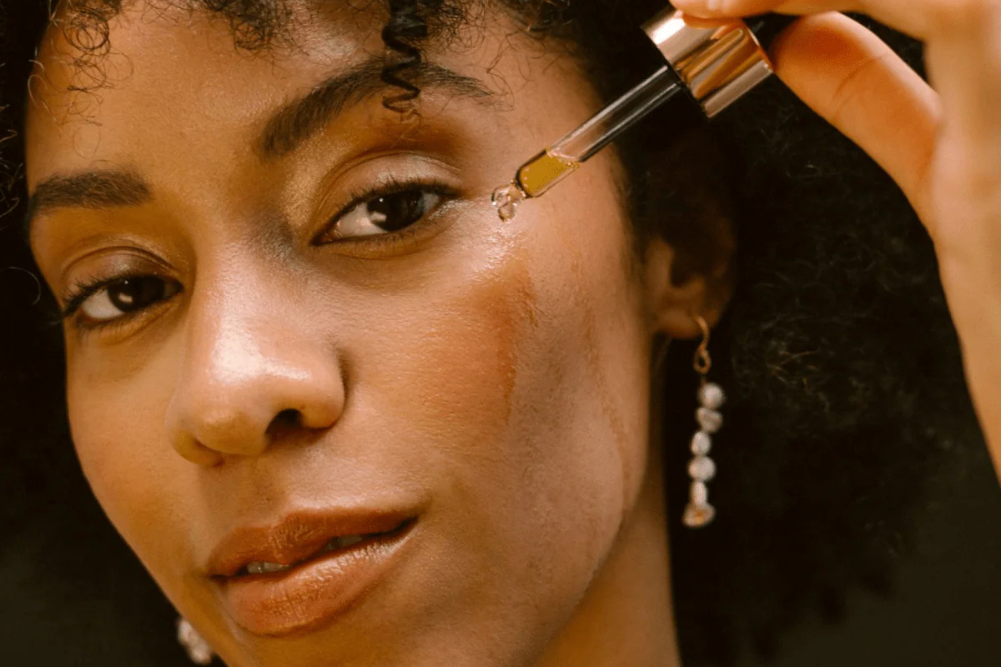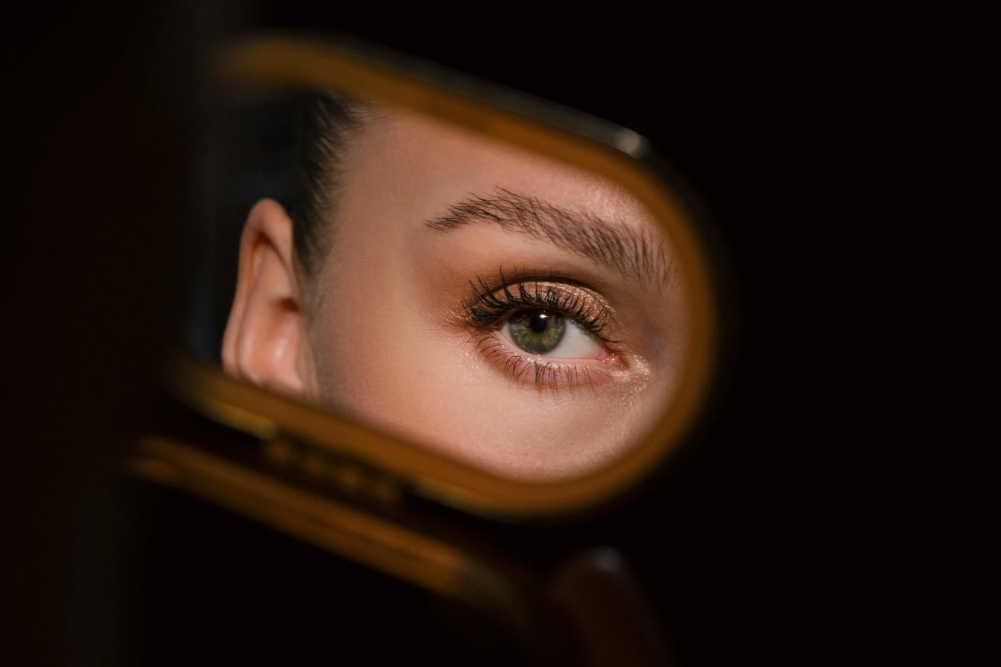How to use Ayurveda to bring balance and good health to your skin
Ayurveda is an ancient medical tradition native to India that’s thought to be over 5000 years old. Ayurveda, which translates from Sanskrit to “the science of life”, is a system of natural medicine that promotes a healthy mind and body through achieving balance in life using diet, herbs, meditation, yoga and breathing exercises. By bringing balance to the mind and body, Ayurveda also brings balance and good health to the skin.
What is dosha?
In Ayurveda people are categorised into three basic types called doshas, which comprise vata, pitta and kapha. These types are based on the five elements that make up the universe: air, space, fire, earth and water. Vata is mostly air and space, while pitta is fire and water, and kapha is mainly earth and water.
Each dosha has different physical and mental characteristics. The three doshas are believed to affect the mind and body and can determine a person’s physical characteristics, their emotional tendencies and even how their skin behaves. You are born with one dominant dosha, but over time, with age, your dosha can change due to diet, lifestyle, pollution and other environmental and external factors.
Vatas should be careful not to overdo exercise. Grounding activities like yoga, Pilates and walking are more suited.
Identifying your predominant dosha is the first step in getting to know how you and your skin react to your surroundings and diet. It can give you clues to what mental and physical weaknesses and strengths you have, and health issues you may be vulnerable to.
Discovering your dosha can also tell you a lot about your complexion and how to best care for your skin. Knowing your dosha will give you the key to what foods and natural skincare products suit you best, to bring balance and nourishment to your skin. Looking after your skin according to your dosha can help prevent common skin issues like dryness, excessive oiliness, pimples, irritations and premature ageing.
Know your dosha
Everyone has characteristics from all three doshas, but you’ll find that there’s usually one dominant dosha that has a stronger influence on your personality, body and skin. Some people may have two equally dominant doshas or may alternate between two.
Vata dosha
Vata people are usually slim, active and full of energy. They do everything quickly and can tend to overdo things and get tired and out of balance easily. They are not good sleepers and their digestion is often sluggish. For a vata person to stay balanced they need to take time out to relax and get enough sleep. Falling asleep before 10pm is recommended for all dosha types. It’s while you are sleeping that your skin and body repair and rejuvenate. Vatas should be careful not to overdo exercise. Grounding activities like yoga, Pilates and walking are more suited.
Vata people usually have normal to dry skin that’s thin, cool to touch, delicate and fine-pored. Their skin is prone to dehydration, dark spots, flakiness, dark circles under the eyes and fine lines and wrinkles. When vata types get out of balance their skin becomes very dry and flaky, and they become vulnerable to skin conditions such as eczema and premature ageing.
Caring for vata skin
Vata people should be diligent when it comes to sun protection, making sure they wear a hat and natural sunscreen when outdoors to protect their delicate skin from sun damage.
They should use vata-balancing natural skincare products made with herbs and essential oils that will hydrate and nourish the skin, to keep the skin moist and supple. They should avoid drying soaps or foaming cleansers that will strip the skin of its natural oils. A gentle cream cleanser followed by a natural moisturiser made with nourishing oils such as coconut, almond, sesame, olive, shea butter and honey, are recommended.
Basil, vanilla, patchouli, rose, geranium, orange and clove are beautiful balancing essential oils for vata types. These essential oils can be added to a carrier oil like olive, jojoba or grapeseed oil and used as a daily massage oil, or added to body butters and lotions. Lavender and clary sage are also lovely, calming essential oils for vatas.
The best balancing diet for vatas to nourish their dry skin is one that’s made up of foods rich in beneficial fats such as olive and coconut oil, avocado, nuts, oily fish and ghee. These skin-loving fats will help keep the skin soft and moist and will help prevent dryness. Warming and cooked foods are recommended for vata types, including warming spices with meals and teas, soups, stews and lightly cooked vegetables. Vatas do well on most spices, but they shouldn’t overdo cayenne pepper and chilli.
These warming foods will help balance out dryness and will improve digestion. Cool salads should be balanced out with grounding vata foods like avocado, beetroot, carrots, cucumber, pumpkin, spinach, mustard greens and zucchini, and topped with a spicy oily dressing.
Warm organic cow’s, goat’s or almond milk with cinnamon and a little honey is also very balancing for vatas.
Vatas should keep the skin hydrated with warm herbal teas, plenty of lukewarm water and sweet, juicy fruits like cooked apples, apricots, peaches, ripe bananas, papaya and citrus fruits. Warm organic cow’s, goat’s or almond milk with cinnamon and a little honey is also very balancing for vatas.
Poor digestion can lead to unhealthy, dull skin, so looking at ways to stimulate digestion will benefit vata types. Adding lemon juice or apple-cider vinegar to warm water is a great way to stimulate digestive juices and promote healthy skin. Including sauerkraut and fermented vegies in meals is another good way for vatas to improve digestion and bring about balance.
Vatas do well on hearty, grounding foods such as root vegetables, cooked grains (amaranth, oats, rice, sprouted breads), quinoa, nuts and stewed fruits.
Cooling and drying foods can aggravate vatas and worsen their skin. Limiting crackers, legumes, chocolate and bitter greens (dandelion, collards, kale) is recommended. If small servings of legumes are eaten they should be soaked first to increase their digestibility, then cooked well and flavoured with lovely, warming spices. Legumes that are easier to digest include red lentils, mung beans and soy beans.
Caffeine and alcohol can also easily put vata people out of balance and can aggravate the skin, so opting for caffeine-free herbal teas is recommended; try ginger and turmeric teas, and caffeine-free masala chai.
Pitta dosha
Pitta people often have a medium build and good, constant energy levels. They are intelligent, like challenges and can concentrate and focus well on tasks. Pittas feel more balanced when they relax at the end of the day and if they have eaten regularly. Moderate exercise is best for pittas or they may suffer from injuries or burn out.
Pitta types have soft, warm and fair skin. Their skin flushes easily and is sensitive, especially to excess sun. Pitta skin can be freckly and, when it’s out of balance, it can become congested, pimply and prone to rashes, rosacea and liver spots. When pittas are under a lot of stress their skin can go red and break out, and they may develop mouth ulcers.
Caring for pitta skin
It’s important to protect pitta skin from excessive sun, so natural sunscreens and hats are a must when outside for long periods. You also need to cool down pitta skin, so steam facials and sunbaking should be avoided.
Pitta types should use cool water when washing their faces and showering. Gentle, natural skincare products are recommended. Harsh soaps and skin products and cosmetics that contain skin irritating chemicals should be avoided. Cooling, soothing oils and essential oils are best suited to pitta skin types. Choose from nourishing oils like coconut or grapeseed, and essential oils lavender, rose, tea-tree, neem, sandalwood and thyme.
Cooling, soothing oils and essential oils are best suited to pitta skin types. Choose from nourishing oils like coconut or grapeseed, and essential oils lavender, rose, tea-tree, neem, sandalwood and thyme.
To balance out their oily, hot constitution, pittas should be eating foods that are more drying and cooling, such as salads and raw foods, cucumber, zucchini, watermelon and cooling herbs and spices like licorice, fennel, dill, parsley, coriander, turmeric, basil and mint. These foods will help to cool the body and reduce skin inflammation. Pittas do well on grains (oats, millet), legumes, milk and yoghurt, root vegies, broccoli, cauliflower, seeds and sweet and tart fruits like pineapple, cherries, kiwi and grapes.
Pitta types should be careful not to eat too many hot, spicy and greasy foods that will add more heat to their systems. Alcohol, caffeine and acidic foods like tomatoes and vinegar will also increase heat in the body and can aggravate the skin. Pittas should use moderate amounts of cooling oils like olive, coconut and ghee when cooking. Small servings of activated almonds, flaxseeds, sunflower and pumpkin seeds will also benefit pittas. Pittas are already oily, so don’t overdo these oily foods.
Pittas should drink plenty of water and enjoy vegie juices to help clear their skin by flushing toxins from the body and providing important skin-boosting nutrients.
Kapha dosha
Kapha types have a solid and powerful build. They are calm, relaxed and easygoing people who are often caring and affectionate. Kaphas like to sleep a lot and can become lazy or depressed if under a lot of stress.
Kapha skin is oily, smooth and wrinkle-free. It’s moist, thicker skin that has larger pores that block easily. When out of balance, kapha skin is prone to rashes, enlarged pores, excessive oiliness, pimples, blackheads and eczema.
Caring for kapha skin
Kapha types should detox the body internally and externally on a regular basis to help flush toxins from the body to promote clearer, uncongested skin. Kaphas should use a natural cleanser twice daily and a deep-cleansing exfoliator like bentonite clay once a week. Bentonite clay is recommended to help remove dead cells and impurities from the skin.
Dry-brushing the skin on your body enhances blood and lymphatic circulation and the removal of dead skin cells, which leaves the skin softer and suppler.
Kaphas should never go to bed with makeup on, or use overly drying soaps and washes. Using drying soaps will only create a rebound effect whereby the skin starts producing more oil. Choose light but nourishing natural moisturisers and body lotions made with grapeseed, apricot kernel and sweet almond oil.
Massaging the skin daily is a great way to improve circulation using revitalising essential oils such as peppermint, rosemary, geranium, yarrow, lemon and orange, diluted in a carrier oil. Exercising daily is another great way to improve circulation and bring kaphas into balance.
It’s important to protect pitta skin from excessive sun, so natural sunscreens and hats are a must when outside for long periods.
Kapha people are generally cool, heavy and oily, so to balance this they should enjoy a good diet rich in wholefoods that are warm, cooked, light, dry and spiced. Kaphas should add pungent and warming spices to meals to invigorate the skin and boost their digestive fire. Kaphas do well on most herbs and spices, particularly ginger, black pepper, garlic, turmeric, ginger, chilli, fenugreek, paprika, cardamom, cloves and cinnamon. Radishes, turnips and raw onions are good for kaphas, too.
Kaphas’ oiliness is balanced by eating more drying and astringent foods like legumes and potatoes. Legumes should be soaked first to help improve their digestibility, then well cooked and spiced.
Kaphas should drink warm drinks rather than cold or carbonated drinks, and should limit frozen foods. Honey is a lovely warming and nourishing food for kaphas. Try adding a little raw honey to fresh ginger tea or warmed cinnamon and almond milk. Drink plenty of lukewarm water throughout the day and include a daily vegie juice to help cleanse the skin and body. Herbal, black and green teas are also well suited to kaphas. Apple-cider vinegar in warm water is another lovely way to improve digestion and skin.
Foods kaphas should avoid and that can aggravate the skin and add to its oiliness include deep-fried foods, sweets, rich desserts, breads, pasta, processed foods and red meat. Chicken and fish are better options for kapha constitutions. Too much salt is also not recommended for kaphas. Due to their oiliness, kaphas should use only small servings of lighter oils (flaxseed, almond and ghee) and nuts and seeds (activated almonds, chia, flax, sunflower and pumpkin seeds).
Fruits kaphas should avoid are those that are sweet and sour like grapes, oranges and heavier, denser fruits and vegies like coconuts, dates, melons, bananas and pineapple, as well as avocado, cucumber and olives. Reducing grains that are heavy and moist (wheat, breads, oats and pasta) is recommended for kaphas.
Too much dairy can be heavy and mucus-forming for kaphas, which can further clog the skin. Warm goat’s or almond milk is preferred for kapha types. Adding some turmeric and ginger will help improve digestion and clear skin congestion.








